External links
- St. Louis Soccer League standings
- National Soccer League champions
- Peel Cup
- 1945 Team Photo
- Sparta Stadium Location
| Men's |
| ||||||||||||||||||||
|---|---|---|---|---|---|---|---|---|---|---|---|---|---|---|---|---|---|---|---|---|---|
| Women's |
| ||||||||||||||||||||
| Youth |
| ||||||||||||||||||||
| By city | |||||||||||||||||||||
| Other topics | |||||||||||||||||||||
The Sparta Athletic and Benevolent Association Football Club, better known as Chicago Sparta, is one of the longest continually established soccer clubs in the United States. Founded in 1917, it was one of the dominant teams from Chicago, Illinois, from the mid-1920s to the late 1940s.
In 1915, immigrant Czechs living in Chicago, Illinois, formed a social sports organization which they named the Sparta Athletic and Benevolent Association. In 1917, several players from Chicago Slavia joined Sparta A and BA to form the core of Sparta’s soccer club. This team, known at times as Sparta A and BA or Sparta ABA, is best known simply as Chicago Sparta. In 1922, Sparta joined the Chicago Major League. However, up to 1923, Sparta had remained an undistinguished amateur recreational team. That year, it signed several Czechs who had recently immigrated to the United States. These proved to be exceptional players and they quickly brought Sparta to the top of the city’s soccer hierarchy. At the time, Chicago was dominated by ethnic British leagues, but during the early 1920, several new leagues were formed to meet the needs of other expatriate teams. There are no records of which of these leagues Sparta played in, but in 1926, it joined the St. Louis Soccer League which was attempting to expand throughout the Midwest United States. Sparta played only four games, a 2-1-1 record, before withdrawing on November 16, 1926. It then joined Chicago's International League, winning nine titles before moving to the new National Soccer League of Chicago in 1937. It won that season's title, then no more. However, by that time, it was gaining attention at the national level, winning the 1938 National Challenge Cup and earning a co-championship in the 1940 National Challenge Cup. In 1938, Sparta rejoined the St. Louis Soccer League. This time, it won the league title, their last in team history. In 1969, Sparta tied for the Peel Cup title with Chicago Kickers, never to win a national or state competition after that year.
Several clubs toured North America in the 1920s and 1930s. When large crowds were expected, events were scheduled to take place at venues such as Comiskey Park or Soldier Field. On May 6, 1927 Sparta played Hakoah Vienna to a 2-2 draw in front of 12,000 fans at Comiskey Park.
Touring clubs that played Sparta at Sparta Stadium (located at 21st Street & South Kostner) included:
| Club | Result | Date | Attendance |
|---|---|---|---|
| Palestra Italia | Lost to Sparta 5-1 | September 2, 1928 | 5,000 |
| Audax (Chile) | Beat Sparta 2-0 | September 17, 1933 | 4,000 |
| SK Kladno (Czech) | Beat Sparta 4-0 | September 9, 1934 | 9,000 |
| Tel-Aviv Maccabees | Tied Sparta 1-1 | September 15, 1936 | 7,000 |
Sparta Stadium stood at 21st Street and South Kostner. As early as 1921, the Chicago Tribune reported scheduled games and results at "Sparta Field", and games at Sparta Stadium were widely reported throughout the 1920s, 1930s, and 1940s. The largest recorded attendance at Sparta Stadium was 9,000 when Sparta hosted SK Kladno (Czech) on September 9, 1934. The last soccer game the Chicago Tribune reported at Sparta Stadium was in November 1953. Shortly thereafter, Sparta Stadium was leveled and paved as a parking lot for nearby factories.
| Year | League | Reg. Season | Peel Cup | National Challenge Cup |
|---|---|---|---|---|
| 1924/25 | CML | ? | Semifinal | Fourth round |
| 1925/26 | CML | ? | ? | First round |
| 1926-27 | SLSL | 4th | ? | Semifinal |
| 1927/28 | ISL | 1st | Champion | Quarterfinal |
| 1928/29 | ISL | ? | Champion | Semifinal |
| 1929/30 | ISL | 1st | Champion | Second round |
| 1930/31 | ISL | 1st | Champion | Second round |
| 1931/32 | ISL | 1st | Champion | Quarterfinals |
| 1932/33 | ISL | 1st | Champion | Semifinal |
| 1933/34 | ISL | 1st | ? | Quarterfinals |
| 1934/35 | ISL | 1st | ? | Second round |
| 1935/36 | ISL | 1st | ? | Quarterfinals |
| 1936/37 | ISL | ? | Champion | Semifinals |
| 1937/38 | NSL | 1st | ? | Champion |
| 1938-39 | SLSL | 1st | Champion | Quarterfinals |
| 1939/40 | ? | ? | ? | Champion |
| 1940/41 | ? | ? | ? | ? |
| 1941/42 | ? | ? | ? | ? |
| 1942/43 | ? | ? | ? | ? |
| 1943/44 | ? | ? | ? | ? |
| 1944/45 | ? | ? | ? | ? |
| 1945/46 | ? | ? | Champion | ? |
| 1946/47 | ? | ? | Champion | Final |
| 1947/48 | ? | ? | Champion | ? |
League Championship

The Mitropa Cup, officially called the La Coupe de l'Europe Centrale or Central European Cup, was one of the first international major European football cups for club sides. It was conducted among the successor states of the former Austria-Hungary. After World War II in 1951 a replacement tournament named Zentropa Cup was held, but just for one season, the Mitropa Cup name was revived, and again in 1958 the name of the tournament changed to Danube Cup but only for one season. The tournament was discontinued after 1992.
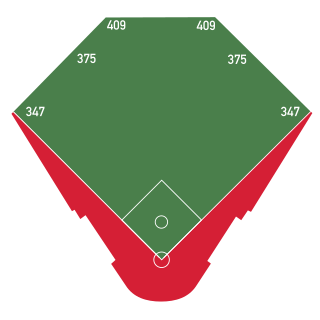
Comiskey Park was a baseball park in Chicago, Illinois, located in the Armour Square neighborhood on the near-southwest side of the city. The stadium served as the home of the Chicago White Sox of the American League from 1910 through 1990. Built by White Sox owner Charles Comiskey and designed by Zachary Taylor Davis, Comiskey Park hosted four World Series and more than 6,000 Major League Baseball games. Also, in one of the most famous boxing matches in history, the field was the site of the 1937 heavyweight title match in which Joe Louis defeated then champion James J. Braddock in eight rounds that launched Louis' unprecedented 11-plus year run as the heavyweight champion of the world.

Athletic Club Sparta Praha, commonly known as Sparta Prague, is a football club based in Prague.
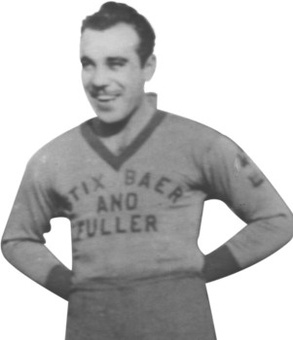
Adelino William Gonsalves was an American soccer player, sometimes described as the "Babe Ruth of American Soccer". He spent over 25 years playing in various American professional leagues and was a member of the U.S. squad at the FIFA World Cup in 1930 and 1934. He is a member of the National Soccer Hall of Fame.
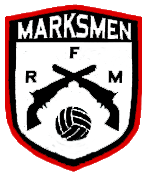
Fall River Marksmen was an American soccer club based in Fall River, Massachusetts. They originally played as Fall River United before becoming known as the Marksmen after their owner, Sam Mark. During the 1920s and early 1930s they were one of the most successful soccer clubs in the United States, winning the American Soccer League on six occasions. They also won the National Challenge Cup four times. In 1924 they won the first ASL / Challenge Cup double and were subsequently the American soccer champions three times in succession. Between 1928 and 1930 they won a further three titles in a row. In 1930 they completed a treble, winning the ASL title, the Challenge Cup and the Lewis Cup. The same year they also toured Central Europe.

Sports in Chicago include many professional sports teams. Chicago is one of ten U.S. cities to have teams from the five major American professional team sports. Chicago has been named as the "Best Sports City" by Sporting News three times in 1993, 2006 and 2010.
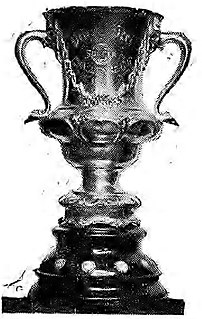
The Peter J. Peel Challenge Cup, better known as the Peel Cup, was an open soccer competition that crowned the Illinois state champion until it was replaced by the Illinois Governor’s Cup in 1971.
John Hynes was a Scottish-born American soccer forward. He spent over twenty years in the American Soccer League, twice earning league MVP recognition. In 1949, he earned four caps with the U.S. national team. In addition to playing professional soccer, Hynes was a New York City fireman from 1947 to 1975 and served in the U.S. Army in World War II. He is a member of the National Soccer Hall of Fame.

Stix, Baer and Fuller F.C. was a U.S. soccer club which played in the St. Louis Soccer League from 1931 to 1934. The team was known as Hellrungs from 1929 to 1931, St. Louis Central Breweries F.C. from 1934 to 1935 and St. Louis Shamrocks from 1935 to 1938. During its short existence, it won two National Challenge Cup titles and two league championships as Stix, Baer and Fuller and one National Cup and league title as St. Louis Central Breweries.
Fabriciano “Fabri” Salcedo was a U.S. soccer forward. Salcedo spent thirteen seasons in the American Soccer League, leading the league in scoring three of those seasons, one season in the St. Louis Soccer League and part of one season in the National Soccer League of Chicago. He is a member of the National Soccer Hall of Fame.

William Stewart Lang was a Scottish-born American soccer player. A dominant player through the 1930s and a member of the U.S. national team at the 1934 FIFA World Cup, McLean disappeared without a trace in 1938. His disappearance remained a mystery until June 2022, when an investigation by The Athletic's Pablo Maurer and Matt Pentz uncovered the details behind that disappearance; McLean had suffered a nervous breakdown after multiple head injuries and lived out the last 40 years of his life in a series of public mental health facilities.
The St. Louis Soccer League was based in St. Louis, Missouri and existed from 1915 to 1938. At its founding, it was the only fully professional soccer league in the United States. The league was founded from two teams from the St. Louis Soccer Football League and two teams from the Federal Park Soccer League.

Alexander McNab was a Scottish-American soccer player and coach. He began his career in Scotland before moving to the United States. In the US, he won six consecutive National Challenge Cups with teams from both the American Soccer League and St. Louis Soccer League. He was inducted into the National Soccer Hall of Fame in 2005.
Ponta Delgada Soccer Club, also referred to as Fall River Ponta Delgada, was a United States soccer club, based in Fall River, Massachusetts. The club was formed by members of the city’s Portuguese community and shared its name with Ponta Delgada, the largest city of the Azores, an autonomous region of Portugal. During the 1930s, 1940s and 1950s they were one of the most successful amateur teams in the United States, winning the National Amateur Cup six times. In 1947 they won the first-ever National Challenge Cup / National Amateur Cup double. The same year their entire squad was selected en masse to represent the United States at the inaugural North American soccer championship. Between 1951 and 1953 they also played in the American Soccer League. They played some home games at Mark's Stadium in North Tiverton, Rhode Island, previously the home of Fall River Marksmen. Like the Marksmen, they did this to avoid the Massachusetts Blue Laws that prevented them from playing Sunday games.
Bricklayers and Masons F.C., also known as Chicago Bricklayers, was a U.S. soccer team based in Chicago, Illinois which joined that city's Association Football League in 1914. Over the next twenty years, Bricklayers won two Peel Cups and was the runner up in the 1928 and 1931 National Challenge Cup.
Millard T. Lang was a U.S. soccer forward and lacrosse player who is a member of both the National Soccer Hall of Fame and the National Lacrosse Hall of Fame.
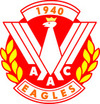
A.A.C. Eagles is an American soccer team based in Chicago, Illinois, United States. Founded in 1940, the team plays in Region II of the United States Adult Soccer Association, a network of amateur leagues at the fifth tier of the American Soccer Pyramid. They joined the United Premier Soccer League in 2022.
The Chicago Falcons were an American soccer team which won the 1953 National Challenge Cup, the precursor to the US Open Cup, and also participated in the Chicago-area National Soccer League in the 1950s.
The Lamar Hunt U.S. Open Cup is an American soccer competition open to all United States Soccer Federation affiliated teams, from amateur adult club teams to the professional clubs of Major League Soccer. The following is the history of the U.S. Open Cup tournament.
Soccer in St. Louis, which dates from 1882, includes pro, college, select and prep soccer teams in St. Louis, Missouri, collectively forming one of the nation's richest municipal soccer heritages.